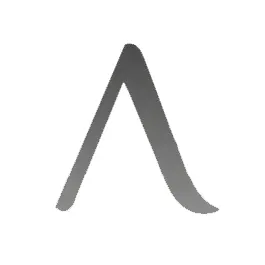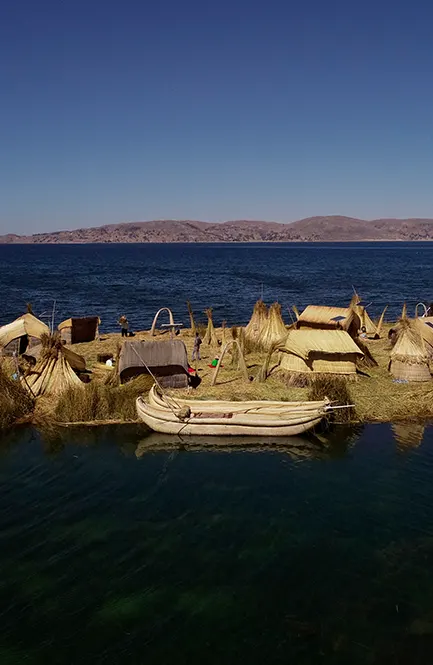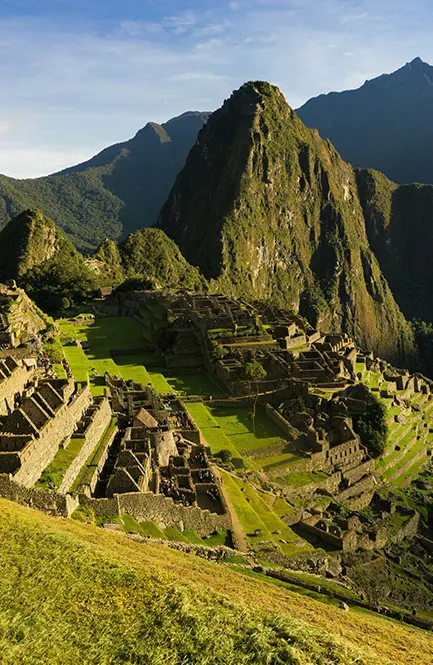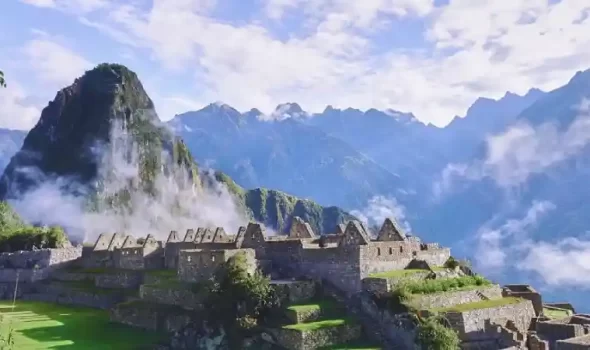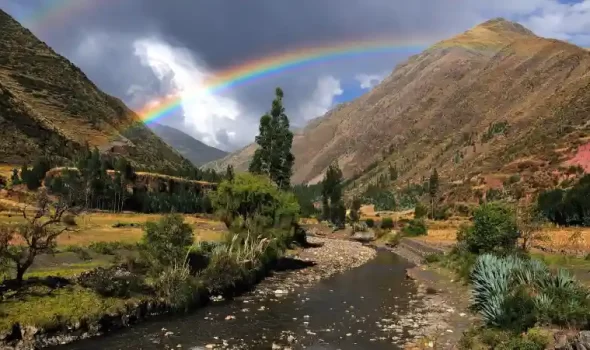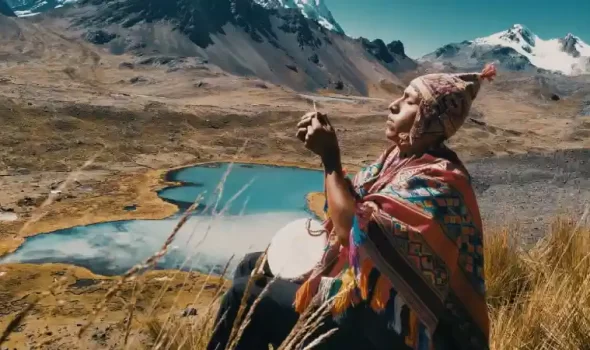Q’eswachaka bridge dates back to Inca times when there was a great network of roads called Qhapac Ñan, a great masterpiece of Inca engineering and organization that linked more than 30,000 km of ancient Inca trails. Accompany Auri Peru Travel to see in detail the impressive last Inca suspension bridge in the world, Q’eswachaka.
What is the Q’eswachaka bridge?
The Q’eswachaka bridge is probably the last vestige of the construction technology of hanging bridges of vegetable fiber practiced by the Inca civilization. This construction technology has been documented with astonishment since the first chronicles about the Incas. The Inca bridge of Q’eswachaka is recognized as Intangible Cultural Heritage of Humanity by Unesco since 2013.
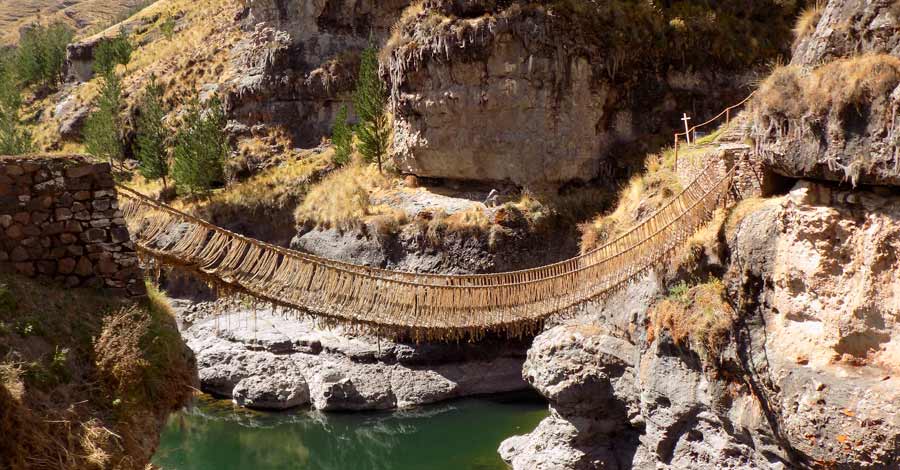
Where is the Q’eswachaka bridge?
The Q’eswachaka Inca bridge rises over the mighty waters of the Apurimac River and is located in the district of Quehue, province of Canas in the region of Cusco. This Inca bridge is located at a distance of 180 km / 111 miles from the city of Cusco.
What is the altitude of the Q’eswachaka bridge?
The Inca bridge of Q’eswachaka is located at an altitude of about 3700 meters / 12,139 feet above sea level. It has an extension of 28 meters long and rises imposingly at a distance of 15 meters from the water level of the Apurimac River.
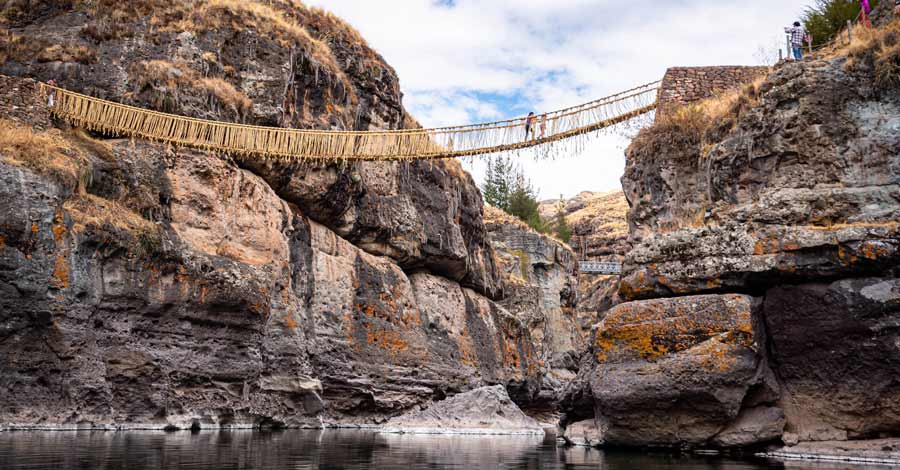
Meaning of Q’eswachaka
The name of the Qeswachaka bridge comes from two Quechua words: “Q’eswa” which means braid and “Chaka” which means bridge. Combining both words the meaning alludes to the technique with which it was built, i it means braided from vegetable fiber. Therefore Q’eswachaka can be translated as “braided bridge”.
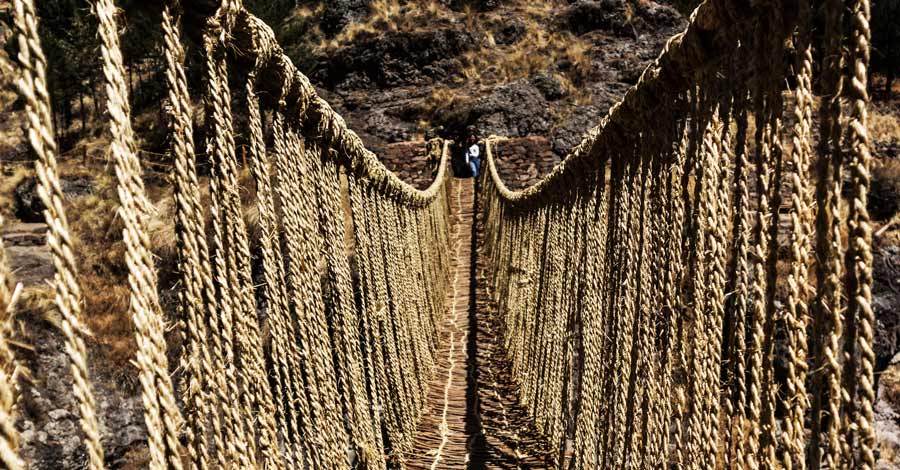
Brief history of the Q’eswachaka bridge
More than 600 years ago, when the Inca Empire was at its peak starting with the rule of the Inca Pachacutec, there were numerous bridges of all types of materials and construction processes, such as Q’eswachaka, a bridge made of vegetable fiber. The hanging bridges of vegetable fiber were built using only ichu and trunks tied to a stone structure that was specially made to support the bridge. These inca roads were used to connect villages and communities located on different slopes of the mountains. It served as a crosswalk but also to transport products from one place to another.
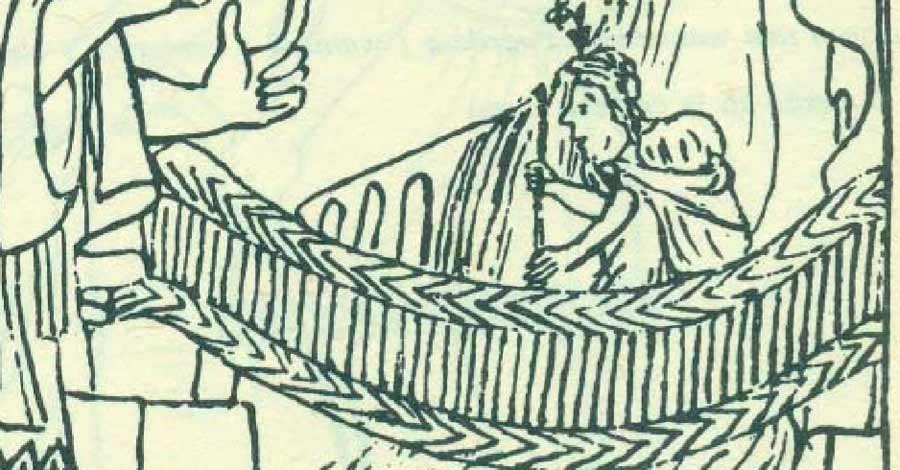
Regarding maintenance, the Incas were clear that they had to do it every one or two years, depending on the use and wear of the ichu and wood. The renewal of these materials was done according to the indications of the Inca specialist called “mitmaq”. According to the chronicles, the maintenance of these bridges was done at great speed during the Inca government.
Qhapac Ñan, the Inca road system
The great network of Inca roads known as Qhapac Ñan is one of the greatest testimonies of great historical and architectural value built by the Incas. In Inca times, these roads connected people from different cultures through the most varied and abrupt geographies that were joined by different types of bridges such as the Inca bridge of Q’eswachaka. All roads converged in the Inca metropolis of Cusco. These more than 30’000 kilometers or 18’641 miles covered the countries of Colombia, Ecuador, Peru, Bolivia, Chile, and Argentina.
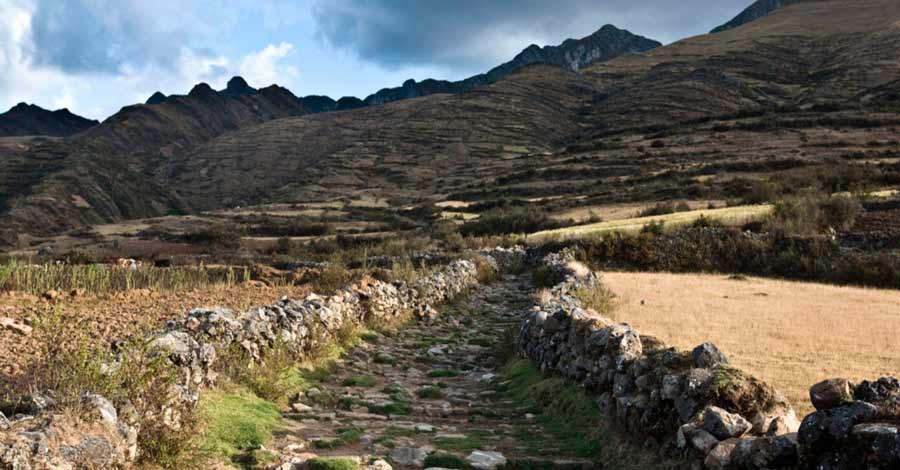
The technology of Inca bridges, Inca bridge building
The Inca bridges allowed a fast movement of people, an efficient exchange of agricultural products, between different ecological levels, which came to incorporate more than 30’000 kilometers of Inca roads, adapting to the topography have been found around 200 bridges in the Andes.
According to the type of construction, material and the terrain where they were built, the types of bridges developed by the Incas were stone bridges, wooden bridges, floating bridges, oroyas and large fiber suspension bridges such as the Q’eswachaka bridge.
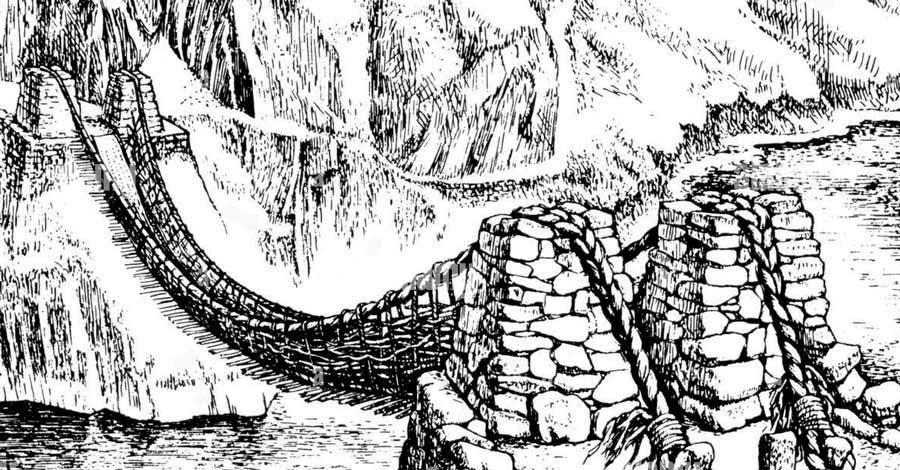
The chronicler Garcilaso de la Vega affirmed that some ethnic groups located towards the Contisuyo region voluntarily submitted to the Incas after seeing the majesty of these bridges made of vegetable fiber. An important fact is that the Incas were the first to develop suspension bridges in the world.
Characteristics of the Inca Q’eswachaka Bridge
- The Inca bridge of Q’eswachaka is knotted to large stone bases that have stood at each end of the ravine since Inca times.
- Q’eswachaka is 33 meters long and 1.20 meters wide. This impressive structure is entirely made of braided “ichu” and swings 15 meters over the Apurimac River.
- This rope bridge is completely hand-woven and has been standing for at least 600 years.
- The bridge is made of a vegetable fiber called q’oya, a grass that grows in the high and humid areas of the highlands and belongs to the same family as the ichu.
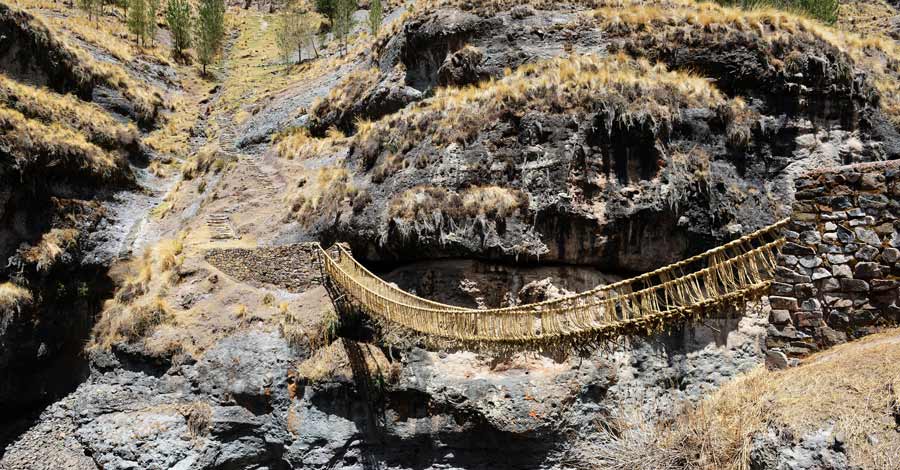
- Every year, in the middle of the second week of June, the bridge is rebuilt with raw materials and traditional techniques dating back to
- Inca times. About a thousand people from the peasant communities adjacent to the bridge gather with the purpose of replacing it, building a whole new bridge and discarding the one from the previous year.
The renovation of the Inca bridge of Q’eswachaka│Inca bridge building
The Q’eswachaka bridge is the only hanging bridge made entirely of vegetable fibers that has been renewed annually since Inca times. The villagers gather following an organization based on mutual aid known as “minka”(collective work for the common good), also participate in the ceremonies of offering to the Pachamama and the Apus in charge of an Andean priest.
Each family of the communities surrounding the bridge, Huinchiri, Chaupibanda, Choccayhua and Ccollana Quehue, has the obligation to make a long rope made of vegetable fiber. In this way, the new bridge will conserve the characteristics of the old structure, using the same materials and specialized techniques from Inca times.
Elaboration of the ropes for the renovation of the Q’eswachaka bridge.
- The inhabitants of the four communities mentioned above are in charge of collecting this vegetable fiber that grows at high altitudes in the Andean mountains.
- After being cut, the q’oya is wrapped in large bundles and carried by the villagers on their backs to the houses, where it is laid out in the sun all day to dry.
- The following day, the bundles of straw are crushed with stones, acquiring the necessary flexibility to make long ropes without losing their effectiveness. Then the straw is soaked in water and is ready to become “q’eswa”, a rope that is the main input for the construction of the suspension bridge and from which it gets its name, because as already mentioned “q’eswa” means braid and “Chaka” means bridge.
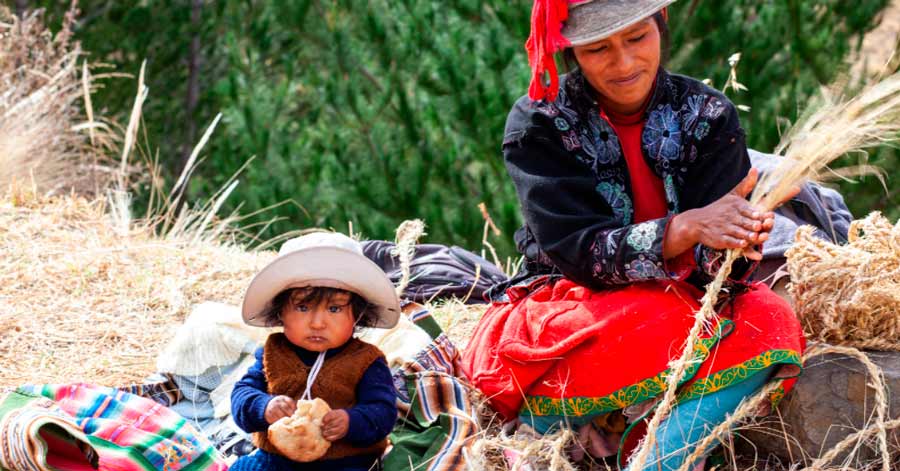
Each family is committed to provide a q’eswa of 40 fathoms long (about 70 meters), so the manufacturing work can take several days. The q’oya fibers are twisted and braided together using their hands, a technique that has not changed in hundreds of years and that the villagers pass down from generation to generation through the participation of children in this activity. Once finished, the soguillas are rolled up and stored until the first day of activities for the construction of the new bridge.
Process of restitution of the bridge of Q’eswachaka
The work of restitution of the Inca bridge of Q’eswachaka takes place every year during the second week of June. It begins on Thursday and ends on Saturday of the same week. During the four days the following activities are carried out:
First day. Meeting of community members and the elaboration of the big ropes
Before starting any work, as is usual in the high Andean populations, an ancestral ritual is practiced with the purpose of worshipping the ancient tutelary entities of the area. An officiant, called “Paqo” (an Andean priest) performs a ceremony to Pachamama (mother earth) and the local apus or sacred tutelary mountains requesting permission for the work and protection for the community members who will participate in the activity.
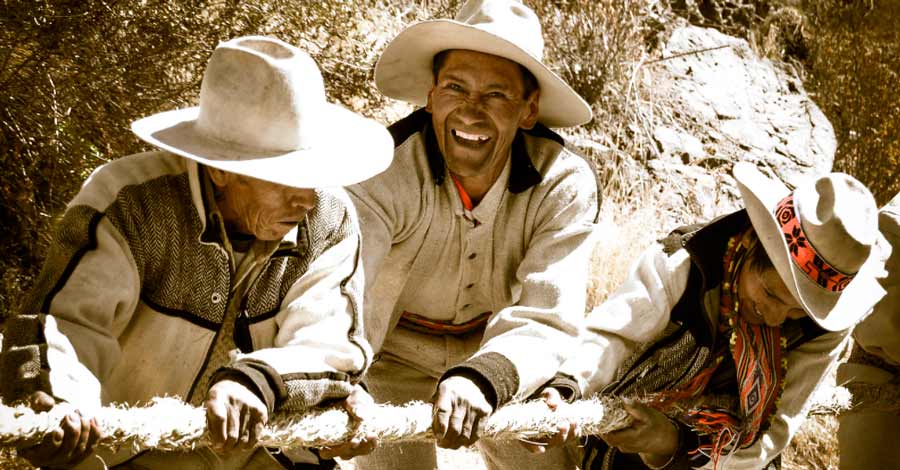
Meanwhile, during the morning, the members of the four participating communities are distributed on both sides of the river, around noon the work of stretching and intertwining the ropes or Q’oyas in groups of thirty or forty begins. The ropes are twisted while the ends are pulled to intertwine them to form the medium ropes that will now be called “q’eswaskas”.
With four of this intertwined q’eswaskas, two larger ropes called “maki” are formed, which will be used as the handrails of the bridge. The villagers also take more medium ropes or q’eswaskas so that, with every three of them, they form thicker ropes called “duros” or “turus” that will be the main supports of the bridge, making a total of four duros.
The ropes are stretched as much as possible to ensure that, after being placed on the bridge, they do not give way under the pressure of the weight they will support. At the end of the day, the villagers carry the large, heavy ropes on their shoulders to the edge of the old bridge and leave them there until the next morning.
Second day. Installation of the basic structure of the new bridge
On the morning of the second day, the Andean priest again sets up the offering table. A community member crosses the old bridge carrying a q’eswa that will be used to transfer raw material between both margins. The previous year’s bridge is cut and dropped into the Apurimac River.
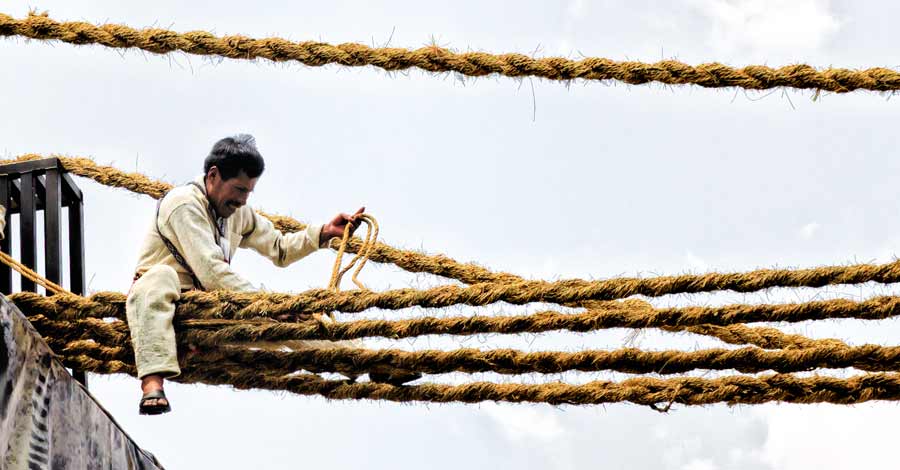
It takes the strength of many villagers to properly tie the large ropes to the stone abutments of the bridge, while the villagers of Choccayhua gather in a high area of the ravine to make a mat that will cover the floor of the bridge. For this they traditionally use branches and leaves from local trees, which are carefully joined together using q’eswas.
By late afternoon of the second day, the makis and makis are firmly attached to the bridge abutments. The basic framework of the bridge is already assembled for weaving.
Third day. The master weavers or “chakaruwaq” weave the bridge
The chakaruwaq or “bridge maker” is the bearer of the specialized technical knowledge for the weaving of the bridge, traditional knowledge that has been passed down through many generations. On this third day of construction, the delicate and risky task of weaving the bridge deck begins, joining it with q’eswas to the main handrails of the bridge (the makis).
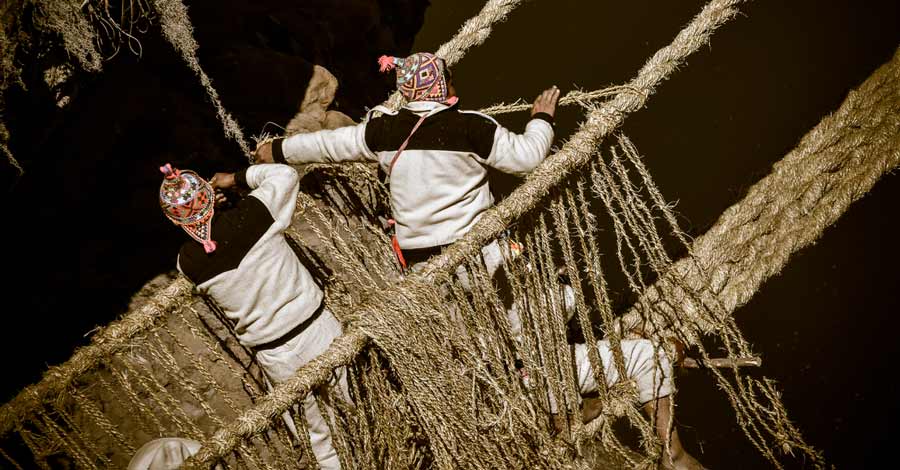
After verifying the firmness of the rope structure placed the day before, two Chakuruwaq masters sit on the bases of the bridge, one at each end, and begin the weaving process, supported by two community members who provide them with q’eswas and cayapos respectively. Cayapos are long wooden sticks that are used as crossbeams for the floor of the bridge, these are placed by the chakaruwaq every certain stretch of the deck.
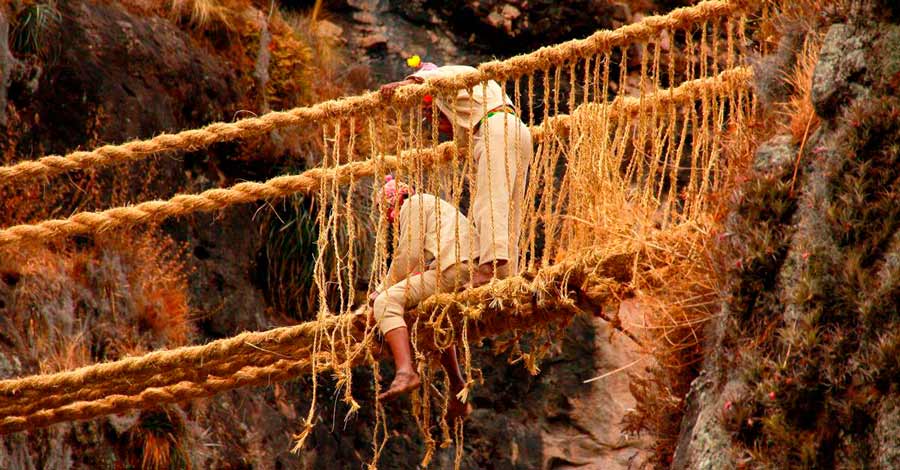
After a hard day, both masters are in the middle of the bridge, at a height of approximately fifteen meters above the riverbed. When the work is finished, the chakaruwaq stand up and shouts “haylli!”, a Quechua expression for triumph or victory, and then he retreats, so a group of community members can spread the previously prepared mat of branches and leaves.
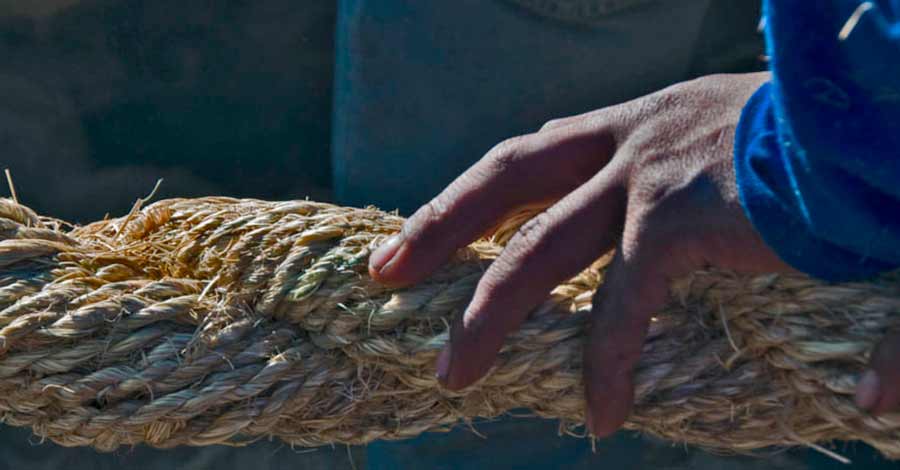
At the ends of the new bridge await the authorities or main characters, who will be the first to cross the renovated Q’eswachaka. The replacement of the bridge culminates amidst applause and congratulations.
Fourth day. Celebrations for the culmination of Inca Bridge building
On the fourth day, the culmination of the bridge is celebrated with a big festival with traditional dances of the region, which is attended by many visitors. The villagers, men, women and children from all over the district of Quehue celebrate to the rhythm of music and tasting local food.
How to get to the Q’eswachaka bridge?
If you decide to go on your own, from Cusco the journey takes about 3 hours and a half by public transport. First to Combapata, then to Yanaoca and then to Quehue. In Quehue you will need a private transportation that will take you to Q’eswachaka and you will arrive in approximately 15 minutes. You can also walk from Quehue.
Another more practical option to save time is to hire the services of a travel agency. Including round trip transportation service and a professional guide.
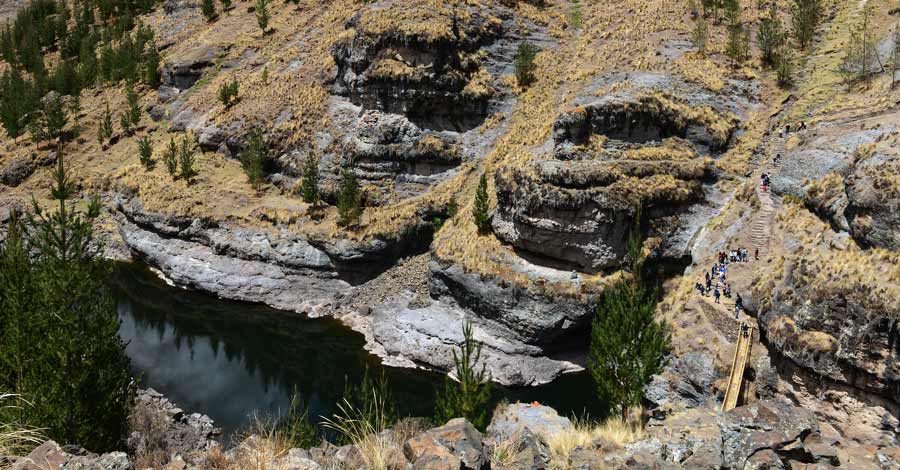
This colossal work of Inca engineering remains in force for the enjoyment of locals and strangers, thanks to the efforts of these Quechua people who proudly keep in their memory, the ancestral knowledge of their Inca ancestors.
Just like the Q’eswachaka bridge, Peru has many amazing places waiting for you, discover the most enigmatic and beautiful places in Peru with us. Working for many years in the travel industry, Auri Travel is pleased to help you with your travel plans to Machu Picchu and various places around Peru, come and enjoy a memorable adventure with us!
